Despite the relative insufficiency of sunlight, a short summer and high humidity in the Moscow region, breeders have bred many varieties of sweet pepper, best suited for growing in greenhouses of this climatic band. Due to the fact that there may be frosts in May, it is recommended to germinate and plant seeds of pepper before planting in the greenhouse soil in the form of seedlings.
Pepper varieties recommended for greenhouses in the Moscow Region, with proper care, can produce decent yields of delicious fruits throughout the summer season, right up to the onset of severe cold.
Content
Conditions and features of growing pepper in greenhouse conditions in the suburbs
Moscow region is unofficially called the Moscow region. The flat terrain has a temperate continental climate. The seasons are clearly different from each other: winter is frosty, the coldest month is January, and summer, which has a short duration, is warm. The highest temperature occurs in July. Local soils washed out to varying degrees are not fertile. Even a small amount of chernozem is leached and podzolized.
Due to the small number of truly summer days, it is necessary to take into account that the pepper crop needs to be kept ripe for a relatively short period. Favorable months for replanting plants in the greenhouse is April or May.
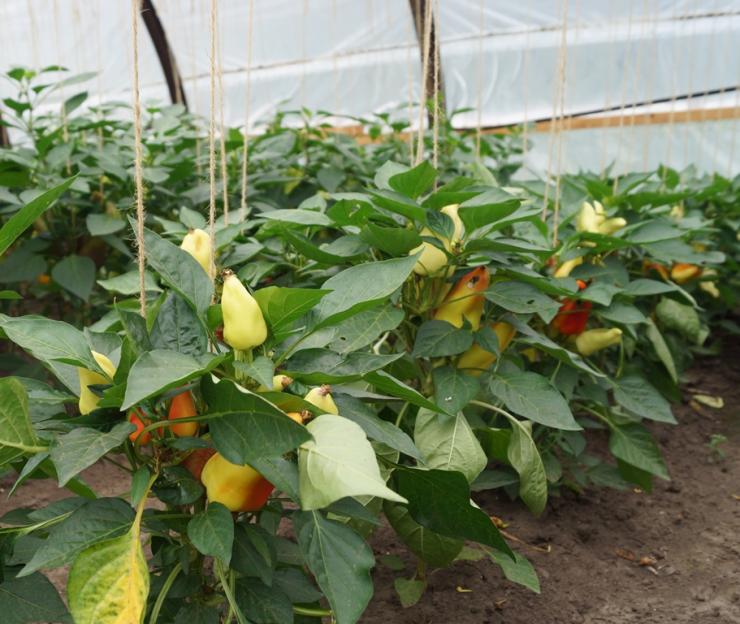
For example, if you plan to transplant pepper in early May, then seed sprouts should be visible in early March. To find out the sowing date, it is necessary to take another 14 days, since such a period of time is needed for the germination of early varieties. That is, planting seeds in the suburbs should occur in mid-February. The exact days will help determine the lunar calendar.
When choosing a landing site, preference is given to light, well-lit soils, which must be prepared in the fall. Initially, fertilizers of organic origin are applied, then - with phosphorus and potassium. In spring, the upper layers are fertilized with ammonium nitrate.
The best varieties of sweet pepper for greenhouses in the suburbs, according to 2018 reviews
To choose the most resistant and productive varieties for the Moscow region, it is important to generalize the experience of specialists and gardeners. According to their reviews, it is early ripe varieties of vegetables that are most suitable for planting in difficult weather conditions, although there are other types of peppers that can give a good harvest.
Early ripe
Early ripe peppers will be an excellent choice for planting in a greenhouse in this region, given the short duration of the local summer. The most popular varieties:
- Apricot favorite.The advantage of this variety is a relatively small bush, reaching only 50 cm. The cone-shaped fruits also do not differ in large size and weigh up to 120 g. It gives stable yields.
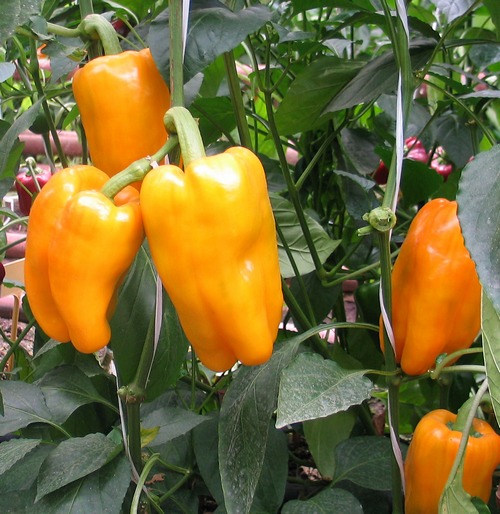
Apricot favorite - Tusk. An oblong fruit of a cylindrical shape, weighing up to 150 g, is appreciated in cooking due to the aroma, sweet taste and pronounced juiciness of the pulp. However, the bushes have a sufficiently large height - about 160 cm.
- Big dad. A cylindrical, thick-walled vegetable has a brownish-red hue. Light weight - about 100 g. The disease-resistant variety, has a good yield.
- Bull. It is among the first peppers in early ripeness. A bright yellow fruit with thick walls can reach up to 500 g. Bushes reach 60 cm.
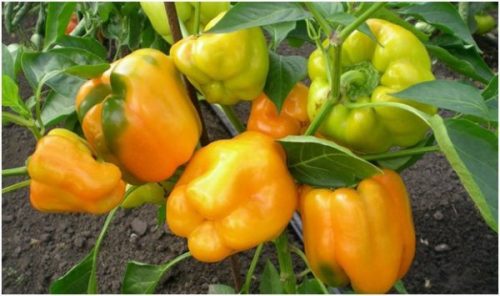
Bull - Health. Up to 15 cone-shaped, oblong fruits weighing about 40 g can be removed from one bush of this variety
- Gingerbread Man. Low-growing, which is an advantage for this region, a bush 40 cm high gives spherical, thick-walled fruits weighing up to 150 g. It is recommended to use for preservation and stuffing.
- Fat Baron. Up to 9 cube-shaped peppers of bright red color, 300 g each, can be removed from a spherical bush 60 cm in size.
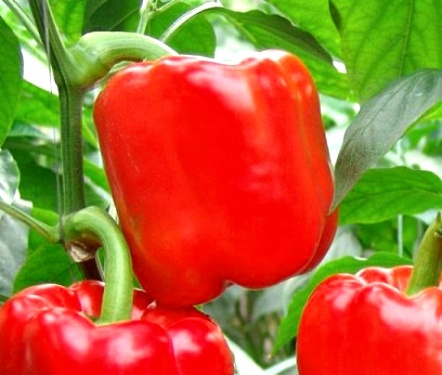
Fat baron - Tenderness. The variety is distinguished by sweetness and juiciness. Red pepper cone-shaped, large in size and thin peel.
Mid-season
Among mid-season grades, the following are popular:
- Gift of Moldova. Disease-resistant and not subject to temperature lability plants produce red, cone-shaped fruits, up to 85 g each. Due to its compact size (up to 60 cm), the bush does not need to be tied.
- Lumina. Red, aromatic, juicy fruits weighing up to 110 g are not afraid of transportation and long-term storage, which can be a plus if you want to start selling them. The plant is classified as disease resistant.
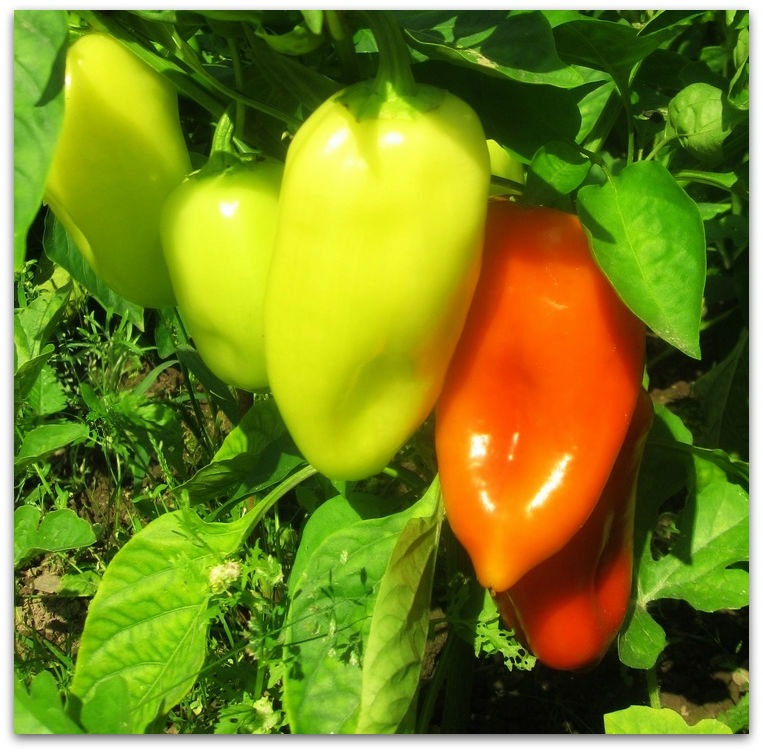
Lumina - Poltava. A fairly tall plant (up to 170 cm) can bear fruit for a long time. Red pepper has the shape of a cone. The variety is resistant to disease.
- Agapovsky. The culture is particularly resistant to disease. A considerable number of leaves does not prevent the bush from being quite compact. The mass of fruits in the form of a cube is about 130 g.
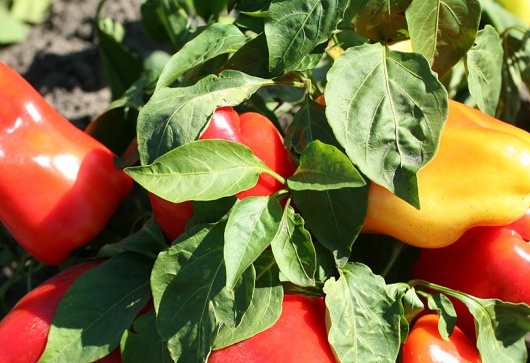
Agapovsky
Late ripening
For those who prefer late-ripe cultures, the following options exist:
- Bell. This juicy pepper is not affected by low temperatures. Does not need a lot of moisture. By juiciness and taste, it is not inferior to varieties of earlier ripeness.
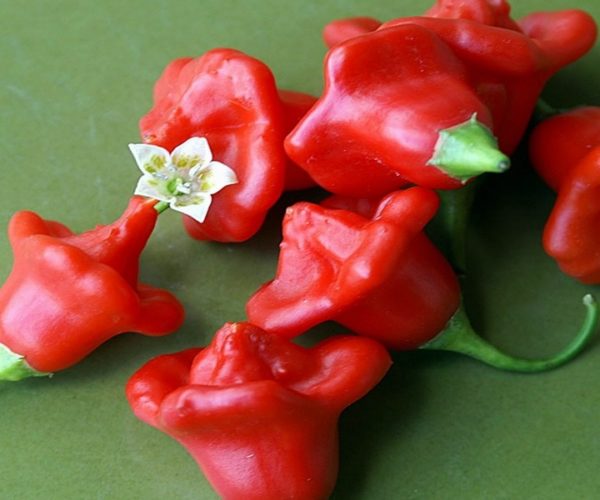
Bell - Korenovsky. Unpretentious to care variety is quite disease resistant. Large, heavy fruits have quite piquant taste.
- Maksim. Does not need excess attention when caring for it, and is perfect for growing in a summer cottage. Large fruits have a pronounced, pleasant aroma.
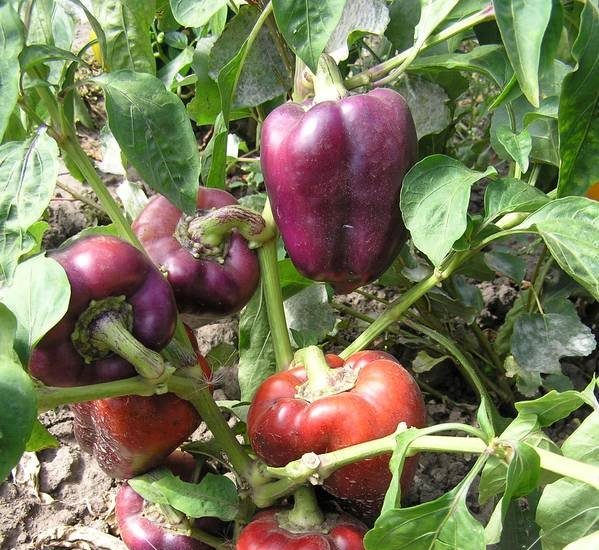
Maksim
How to grow a vegetable in a greenhouse?
The climate of this region does not give gardeners the right to make a mistake. Preparation and disembarkation must be carried out with particular care according to clearly defined rules.
Seed preparation
Seed treatment not only increases the chance of successful and timely biting, but also guarantees a favorable development of the plant at further stages of its maturation. Seeds must be immersed in water heated to + 50 ° C.

After extracting the seeds, the next step is to put them on a pre-moistened tissue. It is important to wait for them to bite, which occurs after about 3 days. This procedure leads to the fact that seedlings of the first sprouts can be seen already on the second day after sowing.
Sowing seeds
Before picking seeds in containers, a suitable seedling box will become a suitable sowing capacity, with a drainage placed at the bottom of it. Instead of the usual gravel or expanded clay, gardeners advise using egg shells, carefully crushed before use.Indeed, in addition to good drainage properties, the shell can serve as a good top dressing for future sprouts.
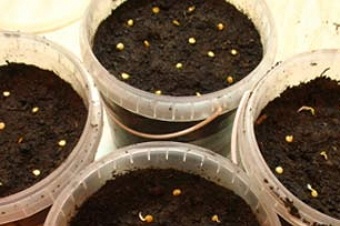
The seeds placed in the pits are neatly covered with soil, which is sprayed with warm water, for this it is recommended to use a spray gun.
Pepper seedling picking technology
Diving is allowed to begin only after the appearance of 2-3 full leaves. To separate the earthen coma, the soil must be watered before the procedure. Then, in separate selected containers, a place is prepared for seedlings. Separating seedlings with a spatula, you need to be extremely careful not to damage the stem.

Transplanted pepper is poured with soil to the place of thickening above the rhizome and watered. To adapt young plants to a new environment, they are left in a warm place, shaded from the sun.
Transplanting seedlings into the greenhouse
The procedure for transplantation should begin after the plant has acquired 10-15 full leaves and buds, and its height reaches 15-25 cm.
Pepper is quenched 14 days before the appointed transplantation date. On warm days, seedlings are exposed to fresh air in a place protected from direct sunlight. Initially, plants are carried out for a short period of time, gradually increasing this period. After 7-10 days in the daytime, warm time, the pepper should be in the open air, and at night - should be brought into the house.
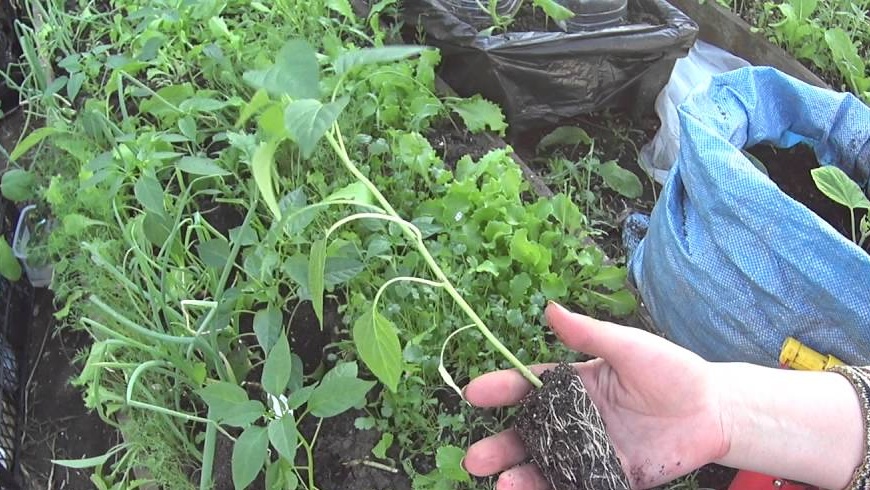
The soil at the landing site is carefully, but not deeply dug, so that the roots are supplied with sufficient air. For successful adaptation, the soil must be covered with a layer of turf, and humus can also be used for this purpose.
Peppers are placed at a distance of 25-30 cm. In this interval, not only the features of the root system are taken into account, but also the convenience of a possible garter of plants in the future. The distance between the beds should be 80 cm. This will provide comfort to the roots and good access to any beds.
Watering and fertilizer
Plant nutrition can be prepared independently. In 10 l of water are bred:
- 10 g of ammonium nitrate;
- 20 g of calcium nitrate;
- 30 g of double superphosphate.
This solution carefully watered each seedling. Also, to accelerate growth and ripening time, organic dressing is used, which is used when watering in the evening.
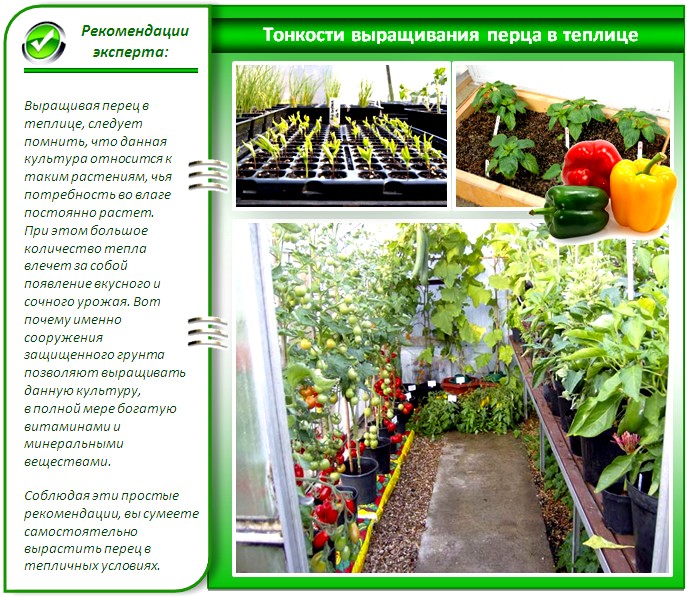
Watering pepper should be fractional. This means that you need to water the plants often, but in small quantities, since an excess of moisture can cause the roots to rot.
Caring for the fruiting period
Non-fruiting shoots must be removed. Since they will not bring benefits, but can interfere with growth and create an extra shadow.
With a certain periodicity, you need to trim the leaves, 2 leaves at a time. The first pruning is done after the fruits have grown on the bottom row, and pruning on the other tiers follows the same principle.
Reviews of the best varieties of sweet pepper by the end of 2018
Mikhail Stepanovich: “I live in the Moscow region, I have been doing pepper for a good ten years, but I never put it on sale, I grow it only for myself. At the moment, my favorites are: Orange King, Bagheera and Red Elephant. In these varieties, I am attracted not only by taste, but also by the appearance, rich in color shades. Plants are not affected by disease, and their productivity has never disappointed me. I grow peppers only in a polycarbonate greenhouse. ”
Margarita Igorevna: “My opinion remains that any culture of this vegetable is individual and has its own strengths. Each variety I tested in greenhouse conditions was successful in terms of yield.However, my preference remains Paris. In the greenhouse, it ripens early, which is undoubtedly a huge plus. "
Elizaveta Maksimovna: “I have been planting sweet peppers for years, and my choice falls only on the early varieties. I want to focus on the word "varieties", since I do not grow hybrids. "I transfer the seedlings to the greenhouse in the middle of May, after a while removing the film and leaving the pepper to grow in the open ground."
Valentin Sergeevich: “My territory is enough for growing peppers for personal use and for sale. Every year I try to plant as many plants as possible. He chose a few well-known early varieties: Aivengo, Funtik, Triton, Heracles. I sow seeds in the last days of February, I pick-up directly in small greenhouses of a closed type. After a while I remove the film. In my memory, I have not yet had lean years. ”
Despite the difficult climate and soil, not distinguished by good fertility, in the arsenal of gardeners there are always a huge number of varieties to obtain a successful crop in the Moscow region.




 Calorie pepper stuffed with meat and rice - BZHU per 100 grams
Calorie pepper stuffed with meat and rice - BZHU per 100 grams Gorky pepper - the best varieties for open ground
Gorky pepper - the best varieties for open ground Hot pepper seeds - the best varieties for open ground and reviews
Hot pepper seeds - the best varieties for open ground and reviews Capsicum tincture for hair - how to use and reviews
Capsicum tincture for hair - how to use and reviews